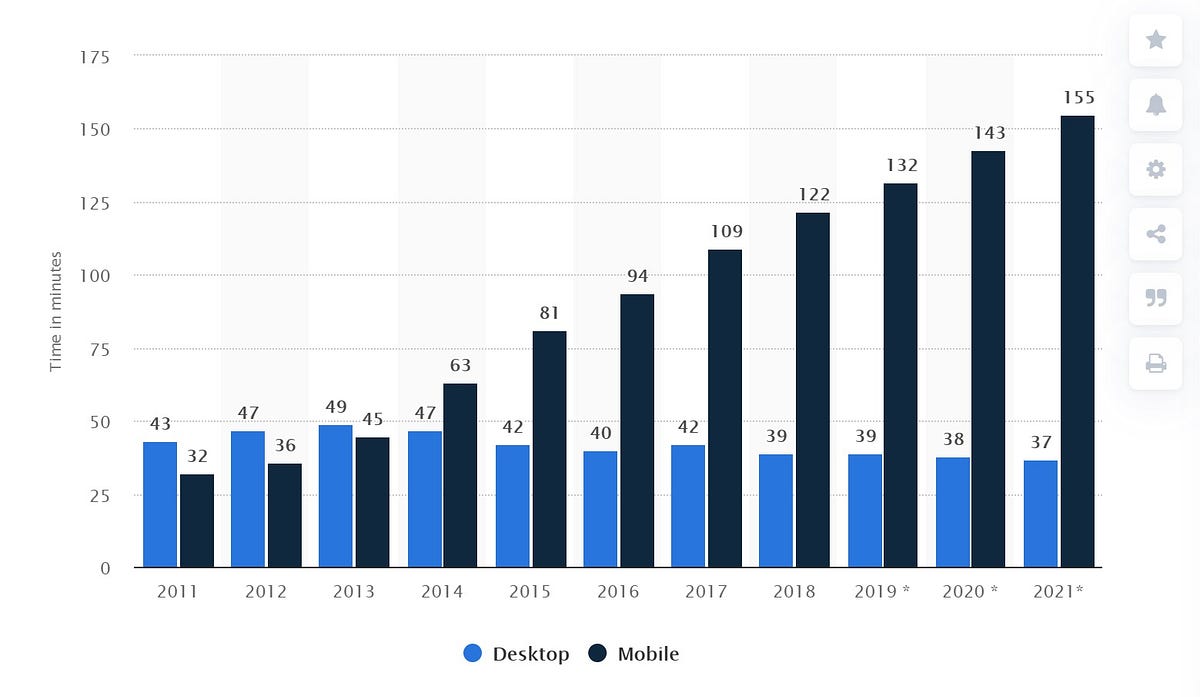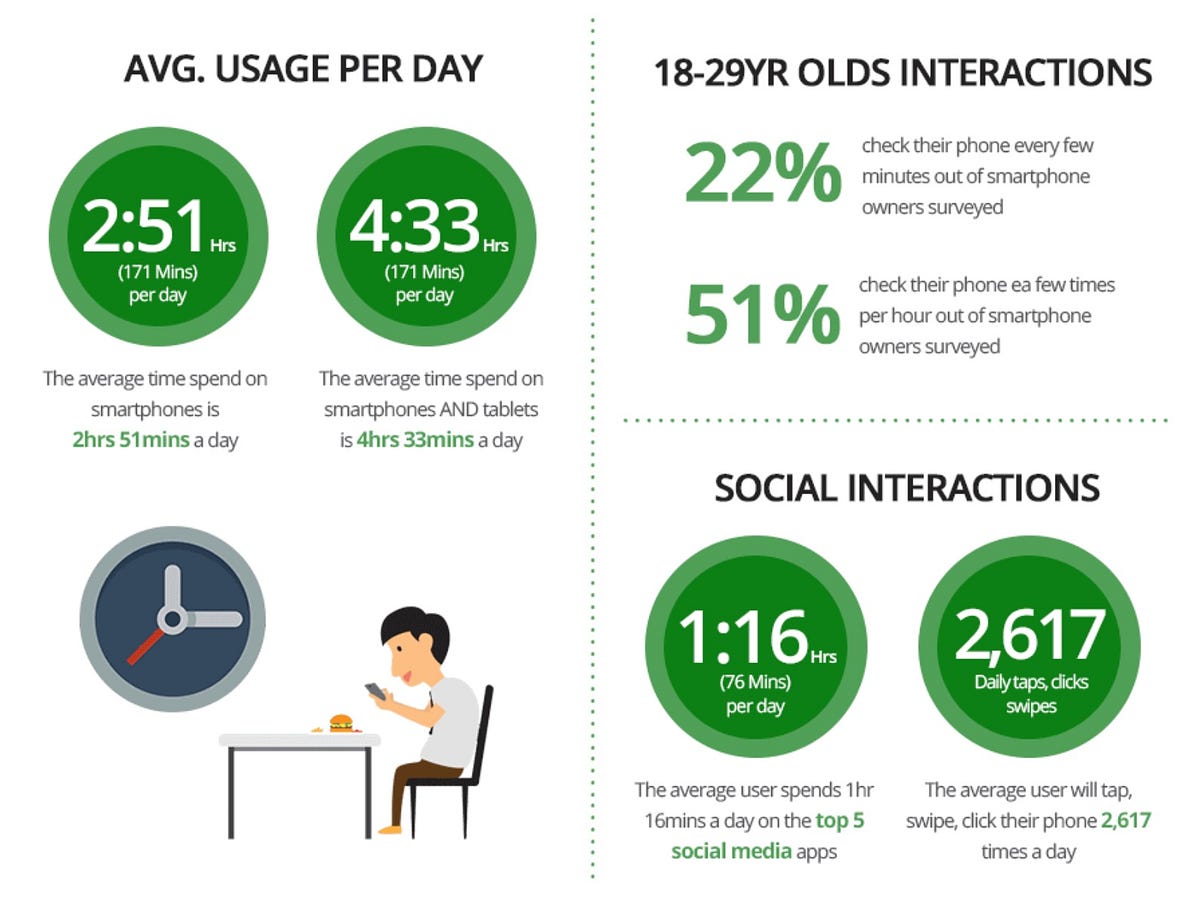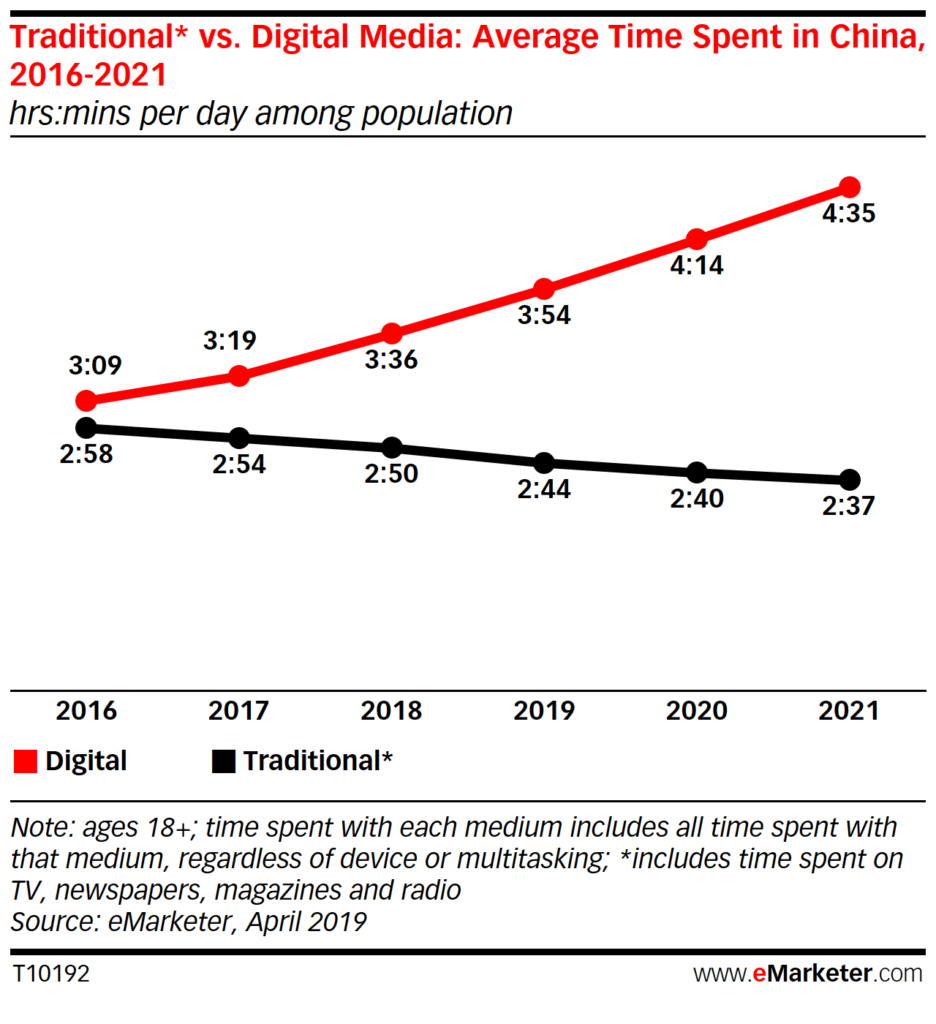Smartphone Addiction, Technology Dependency: Science and Statistics
The impact of tech and the choices we make

How do we choose to have our new and rapidly evolving tools and capabilities impact our lives as individuals, organizations and as a global society? In order to make a smart choice, it is imperative that we have a good understanding of the impact digital technology already has or can have on our lives. What can we say with a degree of certainty?
Digital technology is now at the core of human endeavors and of history as it unfolds. The spread of Covid-19 was monitored using digital technologies and it was the simple, lowly smartphone that brought to light the blatant murder of American citizens by the very police officers sworn to protect them.
The social unrest and political actions ensuing can be either exacerbated or de-escalated using the same technological capabilities.
Smart, digital technology is going to help us restore our work life and the global economy over the upcoming months or years.
The technology in and of itself is neutral.
26% of car accidents in US were caused by smartphone distraction in 2014. Smartphone usage is linked to a decrease in focus and productivity in workers. Studies have linked the increase of suicide rates in young people to an increase in the use of social media and mobile phones.
Being distracted and anything other than in the moment has become the norm.
At the same time, digital technology made the Arab Spring possible.
Digital technology makes our lives so much easier in so many ways; it makes it easier to get where you’re going, to know what weather it’s going to be.
It’s making it possible for you and I to connect, right now.
The technology in and of itself is neutral. The problem, as the Architect reminds Neo in The Matrix, is choice.
How do we choose to have our new and rapidly evolving tools and capabilities impact our lives as individuals, organizations and as a global society?
Understanding the impact of digital technology
In order to make a choice, it is imperative that we have a good understanding of the impact digital technology already has or can have on our lives.
In order to do that, in this article, I have compiled research on the trends in (over)usage of digital technology; the positive and negative effects it has, and some philosophical discussion on the impact on our psyche to understand if we should be speaking about “dependency” or addiction in the first place.
And broader, to understand the general impact of tech in our lives better.
Addiction or dependency in this article will be used only as a proxy for the worst or most detrimental effects technology can have on us. If we understand tech addiction better, and we understand the general positive and negative effects of technology better, I’m sure we can all make better choices.
On a personal note, I wrote a book on the effect of digital technology on our lives. I wrote this book partly because I discovered I was heavily “addicted” to my smartphone and was headed toward burnout. When speaking to people about this book, I often have a hard time explaining the importance and relevance of the subject.
I hope this article will help me drive my point home.
Using technology for what matters
What is my point? My point is that we need to make a conscious, balanced choice as to how we allow technology to affect us.
If you work in tech, or you are interested in technology — or basically, if you’re human and you own a smartphone/laptop/pc — this is relevant to you.
Regardless of the debate if digital technology is more helpful or more harmful: the technology and how we use it does have a significant impact on our lives, for better or for worse. Let’s make a conscious decision for what we want that impact to be.
The rise and rise of device usage
First things first. It seems that we are using our smartphones and other devices more and more, the average user reportedly reaching for their digital device around 150 times a day.
Leaving the debate aside for a moment as to whether this is a good or a bad thing, can we find data that shows us if the use of digital devices worldwide is still increasing, if it’s coming to a slow halt or has even started decreasing on average?
Daily internet usage per capita worldwide 2011–2021

Source: Statista (Research by Zenith Optimedia). Daily internet usage per capita worldwide 2011–2021, by device.
Research by Zenith Optimedia suggests that the overall usage of the internet has steadily been increasing over the years from 2011–2018, and extrapolating these findings predicts a further fairly steep rise in the years 2019–2021.
Apparently, for average users a lot of this usage is — as one would maybe expect — due to the use of the top-5 most popular social media apps:
Average usage per day

Sources to go with these numbers can be found in the infographic about smartphone usage at Gifographics.
Emarketer.com has been researching the use of digital media as compared to the use of more traditional media for a good couple of years, across regions and continents, and the results and predictions are in line with what’s mentioned above:
Device usage in China 2016–2021

Device usage in the US:

Device usage in Europe, UK, India
In that same research, across all countries and regions, we see digital on the rise. India and the UK show the same pattern as China and the US, although countries with older demographics (Japan, Germany, France) show much more traditional media use vs. digital media (specifically TV).
If the usage of digital devices is indeed on the rise worldwide, can we assume that this is a bad thing? And: if smartphone use or device usage is rising, can we automatically assume that the same can be said for “digital dependency” or “smartphone addiction”?
But first, what are we even talking about when we use those terms?
What is the definition of smartphone addiction or digital dependency?
Smartphone addiction or digital dependency are terms that are thrown around a lot in popular discourse over the past few years.
Parents fear their children are ‘addicted’ to their videogames or social media. Policymakers worry about the future of the economy and the social cohesion of society, all for fear of “smartphone addiction”. Employers wonder how to manage the distracted Gen Y, or how to deal with Gen Z coming into the workplace, digital devices glued to their hands.
The definition of smartphone dependency or addiction is a tricky subject. The scientists trying to study this area are facing a good few scientific and philosophical difficulties.
Difficulties in defining, pinpointing and measuring smartphone addiction
From Wikipedia:
The relationships between digital media use and mental health have been investigated by various researchers — predominantly psychologists, sociologists, anthropologists, and medical experts — especially since the mid-1990s, after the growth of the World Wide Web.
A significant body of research has explored “overuse” phenomena, commonly known as “digital addictions[2][3]”, or “digital dependencies”. These phenomena manifest differently in many societies and cultures. […]
The delineation between beneficial and pathological use of digital media has not been established. There are no widely accepted diagnostic criteria, although some experts consider overuse a manifestation of underlying psychiatric disorders. […]
The Diagnostic and Statistical Manual of Mental Disorders, Fifth Edition (DSM-5) does not include diagnoses for problematic internet use, problematic social media use, and gaming disorder (commonly known as video game addiction), whereas the eleventh revision of the International Classification of Diseases (ICD-11) recognises gaming disorder.
Experts are still debating how and when to diagnose these conditions. The use of the term addiction to refer to these phenomena and diagnoses has also been questioned.
Digital media and screen time have changed how children think, interact and develop in positive and negative ways, but researchers are unsure about the existence of hypothesised causal links between digital media use and mental health outcomes. — Emphasis mine.
What this snippet shows, in essence, is that the scientific community itself has not come to a consensus about 1. whether such a thing as technology dependency even exists, 2. if it exists, what it is, and 3. how to accurately measure it.
A recent report aims to improve on the discussion by adding a methodological note. Most studies concerning device usage rely heavily on subjective self-reports by subjects. We need to be much smarter about the way we “measure” smartphone addiction in scientific studies — self-reporting just won’t cut it.
Defining a pathology
A philosophical question about defining “overuse” or “pathological usage” of devices comes to mind. In a manual such as the DSM-5, a “disorder” or “pathology” will be defined and separated from “normal” behavior insofar as behavior seriously impedes the subject/person or the people in their direct environment to live out their lives productively.
The difference, for instance, between someone with depressive symptoms or a (clinical) depression, is that the person with a depression checks enough of the criteria, consistently for a long enough time, and in such a way that they can’t function in a healthy way in their professional and/or personal lives.
The question now, with a phenomenon such as digital device usage, or “overuse”, is the standard or norm.
If within a relatively few, short years (say, from 2007–2020) around half or more of the entire world population starts using these devices so often — what is the norm that we use to decide what constitutes “normal, healthy” use or “normal, healthy” functioning in our professional and personal lives?
If we can indeed show empirically that these devices and the way we use them distract, raise stress-levels, and impede productivity and psychological well-being — how could we possibly determine what’s still normal or healthy?
What if the norm has shifted, on a global scale?
Addicted versus Hooked versus Indistractable
Finally, Nir Eyal— author of Hooked and Indistractable and possibly the greatest authority on digital distraction and technology that gets us “hooked” — makes a strong point about not calling the phenomenon “addiction”, here.
His main rebuttal argument might be that a lot of people misunderstand and/or misrepresent reports and studies, claiming that digital technology is ‘designed to make our brain release large amounts of dopamine’, which is the same substance that for instance cocaine mimics in our brain to make us addicted.
Nir posits that dopamine is also released when we do other things such as learning, or cuddling, so the release of dopamine when using digital technology is not necessarily a basis for an argument for the perceived malicious ‘addictiveness’ of such tech.
Next to that, he argues, the word “addiction” makes us feel helpless — and that is precisely the opposite of helping us gain more control over how we use our technology — which is exactly what he tries to help readers do in his latest book, Indistractible, and what I incidentally try to help you do in my own Life Beyond the Touch Screen.
A proposed solution for the discussion about smartphone addiction
Maybe, for the sake of argument, it’s a good idea to say that a lot of us are “hooked”, not “addicted” to digital technology.
And further to define being “hooked” simply as using the technology more than we’d consciously wish, and not in the way that best serves our interests.
Negative effects of usage of digital tech
Let’s say that “addiction”, assuming we can come to a (scientific) consensus at some point as to what would constitute that, is the worst level of negative impact tech can have on an individual human being.
In the next section of this article we’ll focus on the positive effects of smartphone usage. But what are the general negative impacts of digital device usage on the individual that we can say are supported by research?
1. Negative impact of smartphone dependency on the individual level
Relatively speaking, the effects on the individual level are easiest to study and are certainly most studied. Here are several studies documenting the negative effects of technology dependency:
-
Anxiety and Confusion
A study from MIT found that students who were asked to give up their phones for just 24 hours suffered from anxiety and confusion without their mobiles. -
Withdrawal symptoms
A study from the Journal of Computer-Mediated Communication that found that some young people suffered from withdrawal symptoms (like increased blood pressure and heart rate) when separated from their phones. -
Increase of suicide rates in young people
A study that linked the increase of suicide rates in young people to an increase in the use of social media and mobile phones. The correlation was evident, although causation was not shown in this study. In the article, a fair case is made to accept the possibility of causation (more use of social media -> higher suicide rates) at face level, however. -
Differences in brain structure, neurotransmitters and brain function*
If you prefer something a little more concrete, a study presented at the Radiological Society of North America conference found differences in brain structure and brain function (including different levels of chemicals in the brain) in teens who were thought to be addicted to smartphones (and corresponding “normalisation” of brain structure and function after these teens went through treatment). - Differences, not necessarily negative differences. The point here, being: we should know if — and if so how and to what extent — our brains are being impacted on a physical level.
BankMyCell did a great job of analyzing a compilation of a fair amount of studies. In the infographic they share here, they show some of the highlights.

From BankMyCell: “All the studies and research data we examined at BankMyCell found that dependency on smartphones does have a real impact on mental and physical health.”
Most of this impact was found to be negative:
1. Stress
In business oriented roles in which work life is connected to the person’s device, as in the case of emails, higher stress levels were observed.
2. Anxiety [and reduction in productivity]
For persons with smartphone dependency symptoms, working with their devices near them tended to reduce their productivity. Expectedly, this reduction in productivity increased as dependency increased.
3. Depression and loneliness
Such symptoms were mainly observed in populations such as teens who have high social media use.
4. Sleep deprivation [and negatively impacted mental health]
This symptom was also observed with increasing dependency on smartphones. Lack of sleep had a negative impact on memory, learning skills, and long-term mental health. […]
5. Narcissism
Those whose dependency mainly showed social media addiction started to display self-absorption traits because of continually taking selfies and posting on their pages.
Negative impact on the organizational level
An obvious, but sometimes overlooked effect of digital technology on organizations is the potential loss of jobs. However, it’s also obvious that every new technological revolution can (and often does) bring this about, but then creates new opportunities and totally different, new jobs.
There is evidence though, to support the notion that the current rise of intelligent technology might have a different effect on the job market in the near future, and the pattern might just be different, this time around.
Is increased complexity a bad thing? If so, then we might also state that the layering of IT systems on top of existing administrative and managerial processes within organizations worldwide is also less then simply a good thing.
Instead of increasing efficiency, Information Technology in organizations often has a tendency to kill efficiency — although this probably has more to do with the way IT is implemented than necessarily the technology itself.
Distraction in the workplace and in academia and subsequent productivity losses have been substantiated in empirical studies.
Negative impact on a global, societal level
The hardest to research and substantially prove is the positive or negative effect of digital technology usage on the societal level.
What we can say is that these technologies have probably facilitated the further political polarization in many societies worldwide, and the proliferation of fake news. Connected to these are the use of digital technology for unethical persuasion in the political and business arenas.
From an economical growth standpoint, it can be argued that the fact that the fast adoption of tech has not helped us stop the downward trend for Total Factor Productivity over the past few years, not because of something specific about the technology itself, but the way it is being used and applied.
Finally, the way that technological capabilities and the ownership of tech companies are distributed across the world, exacerbates already rising levels of inequality across and within societies.
Positive effects of smartphone usage
When I speak with people about the impact of digital technology on our lives, often it will start to feel as if I’m trying to paint technology as the Bad Guy.
That’s entirely beyond my point.
The reason it happens to come across like that, I think, is that it’s difficult to find the right balance. The positive effects of smartphone- or broader, digital technology usage seem to be much more clearly and readily understood by the majority of people.
The core element of that positive impact being: ease. Smartphones, computers, sensors, the internet; algorithms, programs, software et cetera and so on — they all have the capacity to make life infinitely more easy.
But that’s far from the whole story. The potential for good that lies within digital technology is actually absolutely great. And some of that potential is already being applied.
1. Positive impact of technology usage on the individual level
Smartphones and other digital devices and services make life much easier. They have made it possible to work wherever we want, whenever we want — to enjoy conversations with each other but also entertainment completely free from location.
We are able to learn much more and have access to an incredible amount and vast array of information, the likes of which are absolutely unprecedented in all of human history.
It’s now far easier to buy the things we need and want, and in some instances to handle administrative tasks like applying for a loan or mortgage, or filing your taxes, and it’s made it infinitely much easier to travel. Can you say Booking.com?
Next to that:
- Smartphone use can help us learn better and faster.
- Digital technology can have a significant contribution to the learning process and duration.
And digital technology can help us make the world more inclusive by:
Apart from this, there truly is an App for everything, including monitoring your menstrual cycle for family planning, managing your family’s agenda, improving your relationship with your significant other; for meditation, for any and all fitness programs that you can think of, for self-coaching and realizing your own potential.
The beneficial effects of digital technology to individual humans are potentially endless. And that’s far from all.
2. Positive impact of technology usage on the group or organizational level
Humans thrive in groups. Getting the most out of our lives in terms of happiness and value creation is almost always done for and in close cooperation or consultation with others.
As such, digital technology is only the latest in a succession of ever more sophisticated technologies that enable us to communicate and to cooperate better, have better relationships, and create more value for one another.
Technology can help families feel closer. Digital technology is literally making it much easier for my father and his brothers, sisters, uncles and aunts spread out across three or four continents to stay in touch, to hear each other’s voice and see each other’s faces.
Although it’s a hard thing to accomplish, technology in the workplace potentially really does make it possible to be more efficient as an organization or team, and for each individual to do more of what we like and what matters to us.
Also, technology in the workplace is making it possible to be more environmentally responsible by reducing commuting travel, cutting out paper and by choosing to use green cloud tech.
3. Positive impact of technology usage at the societal level
Again, the hardest to research and substantially prove are the positive or negative effects of digital technology usage at the societal level. But here are a few things we can say:
For one thing, between humans and businesses the internet is making the world simply much more transparent, helping in creating the shift toward more fair trade, conscious farming, and the correct treatment of workers.
Next to that, as with Corona — for better or worse — digital technologies can be used both in predicting personal mental health issues and identifying disease outbreaks.
Potentially, our new technological capabilities have the potential to make society much more equal and transparent, fair, and harmonious. Again, digital technology made the Arab Spring possible. Technology has been an important factor in the Black Lives Matter movement, as it was in the #MeToo movement.
Finally, the potential for good for all of mankind and the planet is only limited by our own beliefs, thoughts, and choices.
Combining digital technology and decentralized systems, databases and governance, with green and abundant energy (and efficient energy storage), robotics and intelligent systems, nano- and biotechnology, we could potentially create a world where no one would have to work or do work that they do not like.
Hardly anyone would have to get sick or suffer from hunger or a shortage of basic necessities such as clean water, healthy housing, medical care, education — and even entertainment and sports facilities.
But we’d need quite the paradigm shift to be able to accomplish that, as Yuval Noah Harari evidently points out in some of his latest work.
Conclusion: Digital technology is a mirror
In this article I have tried to list statistics, facts and research that show the positive and negative effects of digital technology. The only conclusion that we could arrive at, I think, is this:
Digital technology has an immense potential for detrimentally impacting our lives at the individual, organizational and societal level.
At the same time, however, the potential for positive impact is nearly unlimited.
As with every technology that has shaken our world; from the mastering of fire, to the invention of the wheel; the printing press, wind energy and steam power, to gunpowder, nuclear power and the internet — the technology itself is neutral.
What matters are the choices we make.
Do we choose to become a horde of addicted or ‘hooked’, mindlessly scrolling, depressed and self-absorbed Touch Screen zombies, or do we choose to become the best we could possibly be, aided by our new technological capabilities?
A mirror and a catalyst for evolution
Smartphone use or digital technology use can be a mirror to us: the way we use them actually showing us what our preferences and beliefs are, and what matters to us. At the same time, if we make a conscious choice about it, smart, digital technology can be a catalist for our (personal) evolution.
Never before in history have we had the type of tools in our hands that can give us so much insight about ourselves, which we can use to improve our thoughts, feelings, and behavior — if we so choose to.
My new book “Life Beyond the Touch Screen” is out now, you can get it here as an e-book or paperback. It’s a meditational booklet designed to increase our consciousness around the impact of digital technology on our lives as individuals, in organizations and society. A reminder to choose.
